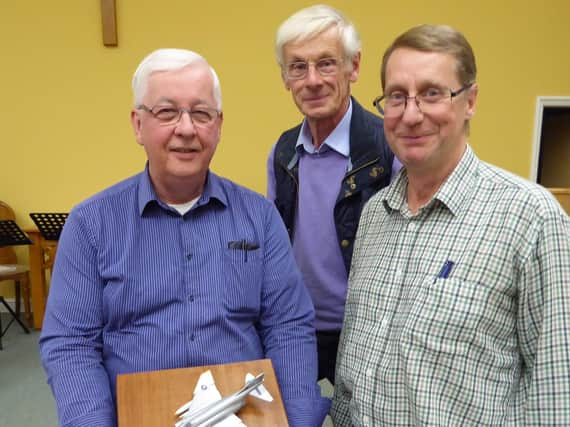Fighter pilot's nose dive was take-off for new life in the Church


Ian Ferguson was the guest speaker at the Men United group's latest meeting in Mount Zion Church.
Mr Ferguson spoke of the low level practise intercept flight over the Pennines which led to the crash and of how his Christian faith helped him overcome the aftermath.
Advertisement
Hide AdAdvertisement
Hide Ad"I was flying at a speed of 600 mph when the nose of my jet simply dived toward the ground without my input," he said. "Slowly and gently I eased the control column rearward but that started a high 8g pitch up to 50 degrees and then a violent nose dive to 30 degrees nose down.
"I remember seeing my canopy full of ground and rocks and no sky. The controls had malfunctioned."
Despite falling for 20 seconds and breaking an arm and a leg on impact, he lived to tell the tale and said he was "absolutely certain God had his hand on my life."
After 30 years in the RAF he later became ordained and became the minister of a church in Blackburn for five years before becoming the chaplain to the 25,000 patients of Cornerstone Bentham Road Health Centre, Blackburn, from which he recently retired.
Advertisement
Hide AdAdvertisement
Hide AdAfter his talk, the man who had wanted to fly a Phantom ever since he was 11 and living near RAF Brize Norton in Oxfordshire, was presented with a model of the aircraft he was flying at the time of the crash made by David Holmes and mounted by Alan Pickles - members of the Men United group - and containing pieces of the wrecked aircraft recovered the from crash site by David Stansfield, who leads the group.